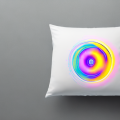Neck pain is a common condition that affects many people. It can be caused by various factors such as poor posture, stress, injury, or repetitive strain. Some people find relief for neck pain through massage, chiropractic manipulation, or physical therapy. However, trigger point therapy with a golf ball is becoming increasingly popular as a self-treatment option for neck pain. In this article, we will explore the benefits, techniques, and tips for using trigger point therapy with a golf ball to relieve neck pain.
Understanding Trigger Points and How They Cause Neck Pain
Trigger points are small, hyperirritable spots in the muscle that can cause pain and discomfort. They often develop as a result of overuse, injury, stress, or poor posture. Trigger points in the neck area can refer pain to other areas such as the head, shoulders, and upper back. They can cause headaches, jaw pain, and difficulty turning the head. If left untreated, trigger points can become more painful, and the muscle can become weaker or tighter, leading to more pain and discomfort.
There are several ways to treat trigger points in the neck area. One effective method is trigger point release therapy, which involves applying pressure to the trigger point to release the tension and promote healing. Other treatments include massage therapy, stretching exercises, and heat or ice therapy. It is important to address trigger points as soon as possible to prevent them from becoming more painful and causing further complications.
The Benefits of Trigger Point Therapy for Neck Pain Relief
Trigger point therapy is a technique that involves applying pressure to trigger points to release the tension and promote healing. It can be done using various tools such as a golf ball, foam roller, or massage ball. Trigger point therapy for neck pain has several benefits such as releasing muscle tension, improving circulation, reducing inflammation, and promoting relaxation. It is a safe, non-invasive, and cost-effective way to manage neck pain and prevent future episodes.
In addition to the benefits mentioned above, trigger point therapy can also help improve range of motion in the neck and shoulders. By releasing tension in the muscles, trigger point therapy can help increase flexibility and mobility, making it easier to perform daily activities without pain or discomfort. It can also help improve posture, as tight muscles in the neck and shoulders can cause slouching and hunching. Regular trigger point therapy sessions can help maintain good posture and prevent future neck pain.
The Role of a Golf Ball in Trigger Point Therapy for Neck Pain
A golf ball is an excellent tool for trigger point therapy as it is small, portable, and can apply precise pressure to trigger points. It can be used on the upper back, shoulders, and neck area to release tension and promote relaxation. A golf ball can be used in various ways such as rolling it along the muscles, holding it against the trigger points, or using it to apply pressure to larger muscle groups.
How to Identify Trigger Points in the Neck Area
Identifying trigger points in the neck area can be challenging as the pain can be referred to other areas of the body. However, there are a few common trigger points in the neck that you can look for. These include the levator scapulae, the sternocleidomastoid, and the upper trapezius muscle. You can identify trigger points by feeling for a knot or a tight band in the muscle. You may also feel tenderness or pain when you apply pressure to the area.
Step-by-Step Guide to Performing Trigger Point Therapy with a Golf Ball
Here is a step-by-step guide on how to perform trigger point therapy with a golf ball for neck pain relief:
- Start by lying on your back with a golf ball under the base of your skull.
- Slowly move your head side to side, up and down, and in circles to allow the golf ball to apply pressure to different parts of the neck and upper back.
- If you feel a tender spot or knot, hold the golf ball against that area for 30-60 seconds or until the pain subsides.
- Move the golf ball to another area and repeat the process until you have covered all the trigger points.
- You can also use the golf ball to apply pressure to larger muscle groups such as the upper trapezius or the levator scapulae by lying on your side and resting the golf ball under the muscle.
Other Tools and Techniques for Trigger Point Therapy for Neck Pain
While a golf ball is an excellent tool for trigger point therapy for neck pain, there are other tools and techniques that you can use to enhance the effectiveness of the therapy. These include foam rollers, massage balls, and self-massage techniques such as myofascial release and deep tissue massage. You can also combine trigger point therapy with stretching exercises or yoga to improve flexibility and prevent future episodes of neck pain.
Combining Trigger Point Therapy with Stretching Exercises for Better Results
Stretching exercises can help improve flexibility and reduce muscle tension, making it easier to release trigger points. Some stretching exercises that you can do to complement trigger point therapy for neck pain include chin tucks, shoulder blade squeezes, and neck rotations. You can also do yoga poses such as downward dog, cobra, and cat-cow to stretch and strengthen the upper back and neck muscles. It is essential to warm up before stretching and avoid overstretching or jerky movements that can cause injury or increase pain.
Preventing Neck Pain: Tips and Strategies to Keep Your Neck Healthy
Preventing neck pain is crucial for maintaining good overall health and quality of life. Some tips and strategies that you can adopt to keep your neck healthy include maintaining good posture, taking frequent breaks from sitting or standing for prolonged periods, avoiding sudden neck movements or jerky motions, and doing regular exercise such as yoga or strength training to promote muscle strength and flexibility. It is also essential to maintain a healthy weight, eat a balanced diet, and manage stress and anxiety levels, as these factors can contribute to neck pain or exacerbate existing conditions.
When to Seek Professional Help for Chronic or Severe Neck Pain
If you have chronic or severe neck pain that does not improve with self-treatment or lasts for more than a few weeks, it is essential to seek professional help. A healthcare provider such as a doctor, physical therapist, or chiropractor can help diagnose and treat the underlying cause of your neck pain. They may recommend other treatments such as medication, injections, or surgery if necessary. It is essential to follow their advice and recommendations to ensure a prompt and successful recovery.
Overall, trigger point therapy with a golf ball is a simple, effective, and low-cost way to manage neck pain and promote overall wellness. By understanding the role of trigger points in neck pain, identifying trigger points in the neck area, and using a golf ball to apply pressure, you can release tension and promote relaxation. By combining trigger point therapy with stretching exercises, adopting healthy habits, and seeking professional help when necessary, you can prevent future episodes of neck pain and improve your overall quality of life.





